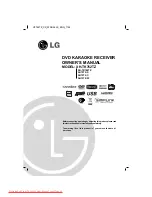
8
DRL2A DIGITAL RECEIVER LINE CARD
DRL2A Features
• Operator selection of communication formats and
handshake priority
• Records up to 256 messages for later display
• Records up to 256 Caller-ID phone numbers. This feature
helps locate and identify the source of the device in
communication and assists in troubleshooting
• Multiple alarms are forwarded to the computer and printer
through the CPM2 with minimum delay
• The DRL2A monitors the telephone line connection every
10 seconds; telephone line faults will result in messages
on the LCD screens, and reports to the computer and the
printer after 2 consecutive failed test
• DRL2A automatically goes into stand-alone mode in case
of CPM2 failure
• “Watchdog” timer continually monitors receiver operation
• “Cold boot” option allows receiver’s configuration to be
reset to factory default programming
• LCD contrast is easily adjusted
• “Examine” mode combines Caller-ID phone number and
alarm messages for the account
• Built-in sounder can be programmed in the “MUTE
BUZZER” option for different functions to suit different
applications
• One programmable output can be used for “message
error” indication or other applications
• Filter and pulse-count tone processing to reduce data
receiving errors for weak and noisy signals
• Line switching to handset or telephone for listen-in, 2-
Way audio and medical systems
• Serial link for video monitoring control
The DRL2A acts as an interface between the digital alarm
transmitter and the CPM2. Different communication formats
can be used to transmit the information.
The main functions of the line cards are to continuously
monitor the telephone line, receive calls from digital dialers
or control panels, and to report alarms to the CPM2. In
addition, if a Line Card is unable to communicate with the
CPM2, each Line Card is capable of functioning independently
with manual interaction with the central station operator.
Each Line Card can record 256 different alarm messages
and 256 Caller-ID telephone numbers.
General Information
The receiver is capable of processing signals from digital
communicators in variety of formats. The type of signal
(alarm, trouble, restore, cancel and so on) can be displayed
and printed. The following formats are accepted by the
DRL2A on power up:
• 3/1, 3/1 extended, 4/2 format with or without parity, 10,
14, 20, or 40 baud
• 4/1, 4/1 extended at 10, 14 or 20 baud
• 3/1 with parity at 40 baud
• 4/1, 4/2, 4/3, and 4/3 DTMF formats
• Ademco Contact ID (DTMF) format
• Ademco Super Fast or High Speed DTMF format with
and without parity
• Ademco DTMF 4/2 Express
• FBI Super Fast
• Radionics Modem II, Modem IIE and BFSK
• SK FSK1, FSK2
• ITI
• SIA format: 110 and 300 baud, tonal and data acknowledge
• 1400Hz, 2300Hz, Dual Tone, Modem II, SIA FSK, and
other handshakes selected by configuration commands
*
The following formats can be selected using configuration
commands:
• 4/2 extended from 10 to 40 baud
• 3/2
• Ademco DTMF 4/1 Express













































